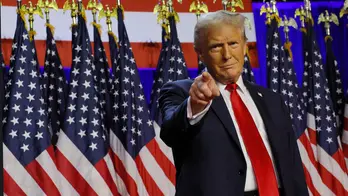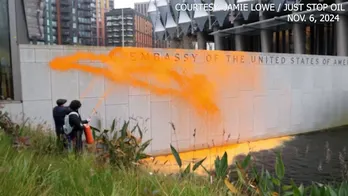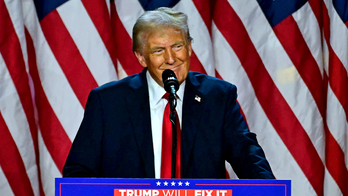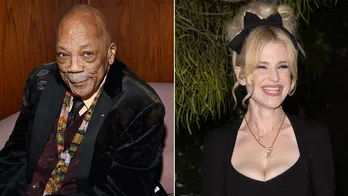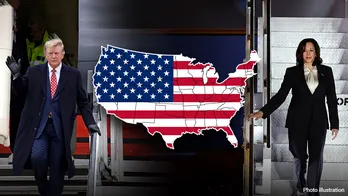5 reasons why Zelenskyy’s victory plan for Ukraine is a no-win gamble
Last month, Ukraine’s President Volodymyr Zelenskyy visited the United States in an effort to revitalize U.S. support for his country’s defense against Russia’s invasion, which is now in its third year.
During his trip, in what appears to be the last push, before November's presidential election, the Ukrainian leader presented to the Biden administration his so-called "Victory Plan" intended to compel Russia to end the war. Tragically for the Ukrainian people, Zelenskyy’s plan is highly unlikely to restore peace in Ukraine. Here’s why:
First. The plan lacks a realistic definition of victory and a viable strategy to achieve it. President Reagan famously described in 1977 his vision for winning the Cold War with the Soviet Union to his confidant and adviser Richard Allen – "We win, they lose." Sounds simple.
But underpinning this approach was a thoroughly thought out strategy of containment, developed and executed by Reagan and his team over the course of many years. This strategy comprised of a series of very specific measures that centered on boosting America’s military might and defense economics while weakening the Soviet Union’s.
AMID SOARING THREATS FROM IRAN, RUSSIA AGAINST US HOMELAND, BIDEN-HARRIS MUST FOCUS ON PROTECTING US ALL

President of Ukraine Volodymyr Zelenskyy and President Biden walk to the Oval Office of the White House, Sept. 21, 2023. (Drew Angerer/Getty Images)
Unlike Reagan’s, Zelenskyy’s plan is little more than the same old plea he’s been employing for over two years – more U.S. and European weapons and permission to launch missile strikes deep into Russian territory. This repackaged request that lacked a comprehensive strategy to win left senior U.S. and European officials "unimpressed," according to the Wall Street Journal.
What is billed as a new "concrete" plan contains no clear path to winning the war. Moreover, Zelenskyy’s definition of victory over Russia remains all but wishful thinking. In an interview Zelenskyy gave to the New Yorker during his visit, he admitted that there’s been "no change in my mindset" regarding total victory for Ukraine.
He seeks "justice" victory, which he defines as retaking all of Ukraine’s territory from Russia, including Crimea, and a path to NATO membership for Kyiv. Russia currently controls roughly one-fifth of Ukraine and has occupied Crimea for a decade.
NATO membership for Ukraine, which Russia views as part of its strategic security perimeter, has been Moscow’s long-standing red line. It’s Putin’s version of the Monroe Doctrine. To enforce it, Putin started this war. Therefore, while Zelenskyy’s aspirations can be sympathized with, they are currently unachievable.
Second. Zelenskyy's plan ignores the reality on the ground. Russia has been making gradual but steady advances on the battlefield. Having claimed control of the eastern coal-mining town of Ugledar ("gift of coal") on Wednesday, the Russian forces are pushing deeper into Pokrovsk. Seizing Pokrovsk would give Russian forces a strategic advantage in capturing the rest of the Donbas. A hub city connecting seven different roads and railways, Pokrovsk is used by Ukraine to resupply its troops.
WHY PUTIN PREFERS HARRIS OVER TRUMP IN THE WHITE HOUSE
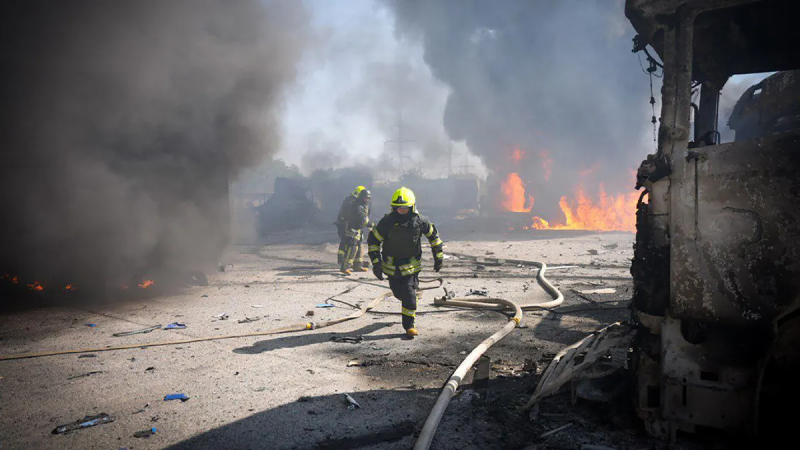
Russia fired 1,300 Iranian Shahed drones at Ukraine, a record-high number. Not a single day went by in September without a drone strike. (East2West)
Meantime, Kyiv has been under heavy bombardment throughout September by Russian missiles and drones. Russia fired 1,300 Iranian Shahed drones at Ukraine, a record-high number. Not a single day went by in September without a drone strike. Russia has destroyed 50% of Ukraine’s energy infrastructure, according to the United Nations. Many areas of the country are becoming unlivable, lacking water, heat and electricity, as winter is approaching.
Reversing the current situation is a monumental task that Ukraine is not in a position to achieve. Even U.S. intelligence admitted in a recent report leaked to the New York Times, likely intentionally, that even if President Biden were to allow Ukraine to use U.S. long-range missiles to strike military targets deep inside Russia, it wouldn’t change the trajectory of the war in a fundamental way. The number of long-range Army Tactical Missile Systems (ATACMS) supplied to Ukraine is insufficient to do the job. Neither the U.S. nor Europe has extra reserves to spare or the production capacity to rapidly beef up their depleting arsenals.
The key factor that Zelenskyy and the Biden-Harris administration have ignored concerns the disparity in combat potential between Russia and Ukraine. It’s a combination of the quantity of weapons, number of troops, defense economics, and production capacity of the military industrial complex. Here are the facts.
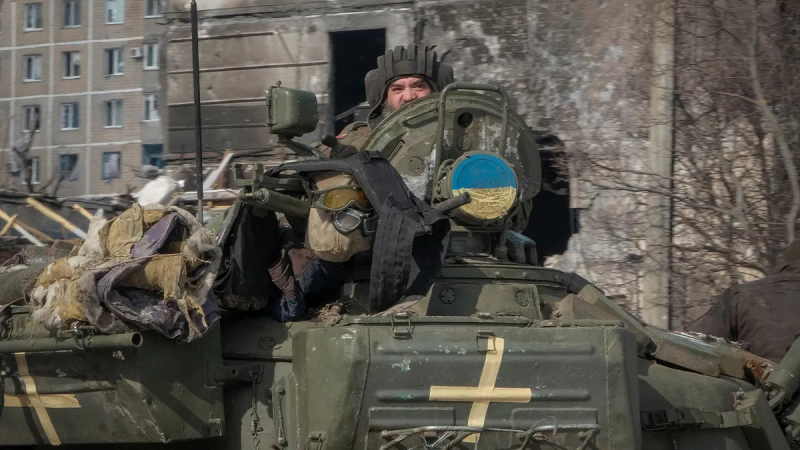
A Ukrainian service member rides a tank near the frontline town of Vuhledar, Feb. 22, 2023. (Reuters/Alex Babenko)
Third. Ukraine is dramatically outgunned and outmanned by Russia. There’s a reason why the Pentagon considers Russia a "near peer competitor" against whom even the U.S. military would struggle to prevail, because Russia, if the U.S. were to deploy forces into the theater, would highly likely join forces with China, Iran and North Korea. Each of these three countries supports Russia’s war effort.
The United States is simply not ready for such a multi-theater war, according to the recently released report of the Commission on the National Defense Strategy (NDS). The commission concluded that "the U.S. military lacks both the capabilities and the capacity required to be confident it can deter and prevail in combat."
CLICK HERE TO GET THE OPINION NEWSLETTER
It is exactly why Biden wouldn’t permit Zelenskyy to use U.S. long-range weapons to strike deep into Russia. Biden knows full well that the risk of Putin using nuclear weapons and the risk of the U.S. being dragged into a direct war with Russia is real, as revealed by a large body of intelligence and confirmed by extensive wargaming we conducted in the intelligence community.
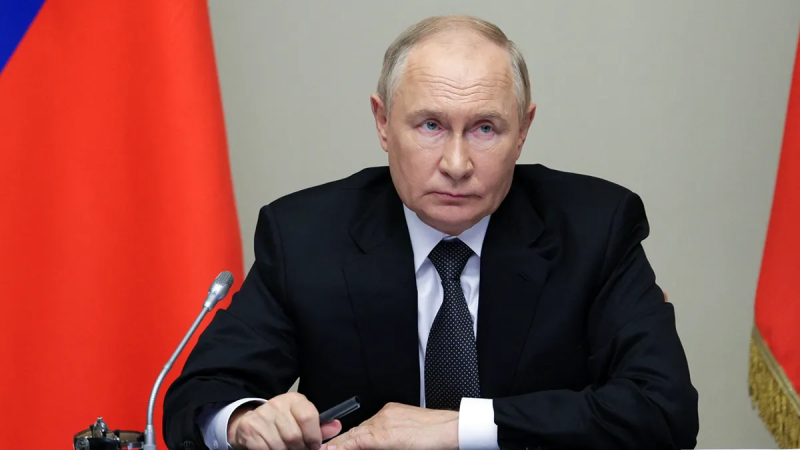
Russia's President Vladimir Putin chairs a meeting regarding the situation in the Kursk region, in his residence outside Moscow, on Aug. 12, 2024. (Gavriil Grigorov/Pool/AFP via Getty Images)
Fourth. The manpower also overwhelmingly favors Russia. Out of roughly one million killed or wounded in this war, Ukrainians have lost approximately 480,000 and Russians – 600,000. But Russia’s population is three times larger than Ukraine’s, allowing Putin to fight the war of attrition to the last Ukrainian.
As Ukraine is bleeding out, with the average age of a Ukrainian soldier fighting Russia having reached 43-45, Russia has already fielded a 15% larger force than it had at the start of the war, according to the same NDS Commission report. In September, Putin, ordered, by decree, another (a third one, since the beginning of the war) increase of the Russian armed forces, adding 180,000 troops.
The Russian military is now 2.38 million people, of which 1.5 million are active servicemen. (By comparison, the U.S. military is approximately 1.3 million active duty service members and 738,000 reserve and National Guard members as of June 30, 2024.) And just last week Putin approved a law giving immunity to convicts who join the military and get deployed to fight in Ukraine.
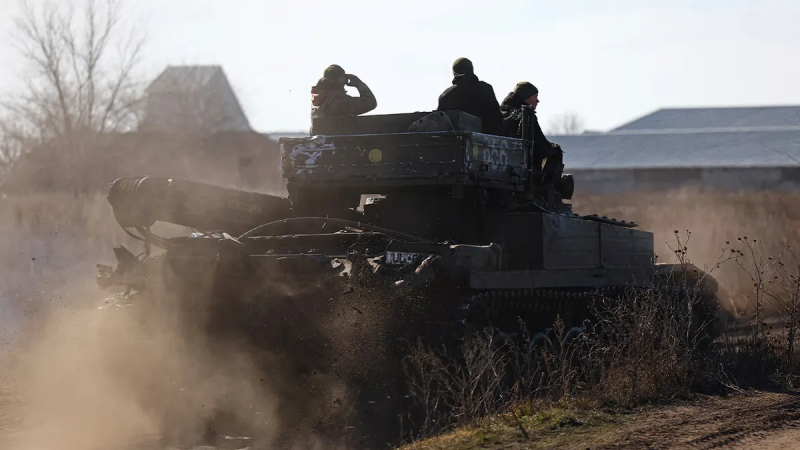
Ukrainian servicemen of the 1st Independent Tank Brigade ride a BREM-1 evacuation tank near Vuhledar, in Donetsk region, Ukraine, March 6, 2023. (Reuters/Lisi Niesner)
Fifth. Russia also beats Ukraine when it comes to defense economics. Ukraine’s GDP fell by almost 30% in 2022, as a result of Russia’s invasion, according to the European Parliament. While its tax revenue fell, its total expenditures grew by 270% from 2021 to 2023, with defense and security expenditures rising dramatically. In August, Ukraine narrowly avoided a default on its debts, when S&P Global cut Ukraine's credit rating to "selective" default, pending the foreign currency commercial debt restructuring taking effect.
The IMF calculates that if Ukraine fights an intense war for one year longer than the end of 2024, its public debt level, currently at almost 100%, would reach almost 140% of GDP. In the coming years, Ukraine will continue to be dependent on external financial support, with the largest share of financing having to come from official creditors such as the EU and the U.S.
Russia, in the meantime, has massively expanded its defense spending, which has risen to 7.5% of GDP. Putin transitioned Russia’s military and economy to a wartime footing seven years prior to the invasion, by invoking a legal regime called a "special period". As a result, manufacturing plans that produced civilian goods were re-tooled to manufacture ammunition and military hardware; factories are now running 24/7 in mandatory three-shifts; and supply chains have been redesigned to avoid Western sanctions. With the military-industrial complex boosting the economy, 29% of Russia’s federal budget is spent on national defense in 2024.
CLICK HERE TO GET THE FOX NEWS APP
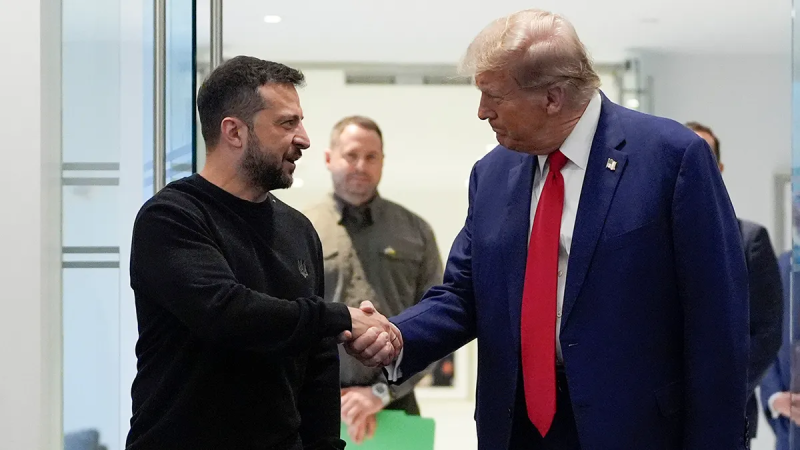
Former President Trump meets with Ukraine's President Volodymyr Zelenskyy at Trump Tower, Sept. 27, 2024, in New York. (AP Photo/Julia Demaree Nikhinson)
Former President Trump was criticized for refusing to say during his debate with Kamala Harris whether he wanted Ukraine to win the war with Russia. But Trump isn’t afraid to be called "Putin’s apologist" by the wishful thinkers. Unlike Team Biden-Harris and many bureaucrats serving in the U.S. government, Trump is a successful businessman who lives in the real, not imagined world. He understands "The art of the possible" – what can we achieve (possible) given available resources, rather than what we want (sometimes impossible).
As a strategic thinker who adheres to the realpolitik school of thought, Trump fully grasps the complex world of geopolitics. His actions, therefore, are based on rational calculations, not on emotions.
It is why Trump’s response to the debate moderators was "I want the war to stop." Volodymyr Zelenskyy and anyone interested in saving Ukraine from total destruction would do well to heed Trump’s wisdom.
Yet, Secretary of State Antony Blinken, at a U.N. Security Council meeting last month, has said he has no doubt Ukraine can win the war.
CLICK HERE TO READ MORE FROM REBEKAH KOFFLER
Disclaimer: The copyright of this article belongs to the original author. Reposting this article is solely for the purpose of information dissemination and does not constitute any investment advice. If there is any infringement, please contact us immediately. We will make corrections or deletions as necessary. Thank you.
